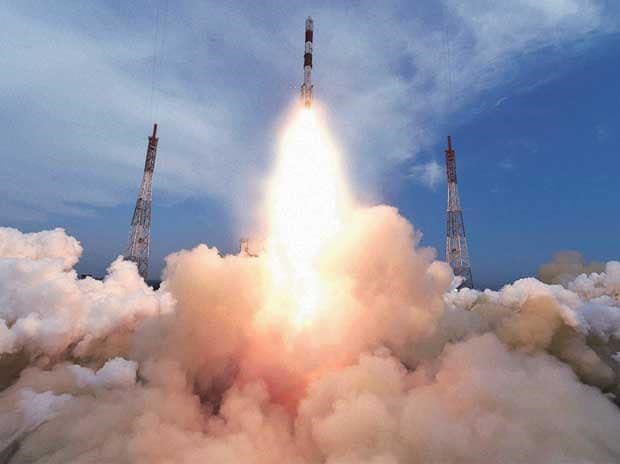Description

Disclaimer: Copyright infringement not intended.
Context
Prime Minister Narendra Modi laid the foundation stone for India's second rocket launchport, located at Kulasekarapattinam in Tamil Nadu's Thoothukudi district. This strategically situated facility, costing Rs 986 crore, is poised to play a crucial role in India's space endeavors.
Details
Need for a New Launchport
- Rising Commercial Demands: India's recent policy shift opening up the space sector to private players is expected to lead to a surge in commercial launches. To accommodate this increased demand, the establishment of a new launchport becomes imperative.
- Preventing Overload: The existing Satish Dhawan Space Centre (SDSC) SHAR in Sriharikota, ISRO's primary launch facility, may face overburdening if tasked with handling both heavy-lift-off missions and smaller payload launches. Hence, the new facility will alleviate this strain by focusing on smaller satellite launches.
Roles and Functions
- Complementary Operations: While the SDSC SHAR will continue to handle larger missions and prestigious projects like the Gaganyaan human-flight mission, the Kulasekarapattinam launchport will cater to smaller payloads and commercial ventures.
- Private Sector Participation: The new launchport is poised to attract private players keen on entering the space industry. These entities can utilize the facility to develop space-qualified sub-systems, construct satellites, and even launch vehicles, fostering innovation and collaboration within the sector.
- Dedicated Infrastructure: With a focus on on-demand commercial launches, the launchport will offer dedicated infrastructure to support these activities, ensuring efficient operations and facilitating the growth of India's commercial space industry.

Why Tamil Nadu for the New Launchport?
- Geographical Advantage:
- The Kulasekarapattinam launchport offers a strategic advantage due to its location, allowing for direct southward trajectories ideal for launches using the Small Satellite Launch Vehicle (SSLV).
- SSLVs, designed for light payloads and carrying less fuel, benefit from shorter and more efficient launch trajectories, which Kulasekarapattinam facilitates.
- Efficient Trajectories:
- Current launches from the Satish Dhawan Space Centre (SDSC) SHAR in Sriharikota require the vehicle to skirt eastwards around Sri Lanka before taking a southward flight, consuming additional fuel.
- Kulasekarapattinam's westward location relative to Colombo eliminates the need for this detour, enabling straight southward flights and fuel savings, crucial for SSLV missions.
- Equatorial Proximity:
- Both launchports are located in Southern India near the equator, offering benefits in terms of velocity imparted by Earth's rotation.
- Closer proximity to the equator enhances the velocity imparted by Earth's rotation, leading to increased payload capacity for launch vehicles, particularly beneficial for geostationary satellites.
Status of the New Launchport
- Land Acquisition: The Tamil Nadu government has acquired over 2,000 acres of land in Kulasekarapattinam for the launchport, which has been handed over to ISRO.
- Construction Timeline: construction at the site may take up to two years to complete.
- Launch Capacity: Once operational, the new facility is expected to accommodate between 20 to 30 SSLV launches annually, boosting ISRO's launch capabilities and supporting its future missions.
SSLVs (Small Satellite Launch Vehicles)
- Definition: SSLV is a small satellite launch vehicle developed by ISRO (Indian Space Research Organisation) to cater to the launch of small satellites.
- Specifications: It features a three-stage launch vehicle with a lift-off weight of about 120 tonnes, measuring 34 meters in length and 2 meters in diameter.
- Propulsion: SSLV is designed with a three-stage solid propulsion system and a liquid propulsion terminal stage.
- Payload Capacity: SSLV missions are capable of launching small-sized satellites weighing between 10 to 500kg into Low Earth Orbit (LEO), including mini, micro, or nano satellites.
- Purpose: SSLVs are cost-effective and intended for satellite insertion into orbits with shorter flight times, making them ideal for commercial and on-demand launches.
India's SSLV Journey:
- Development: SSLV represents ISRO's expansion of launch capabilities, particularly to accommodate small satellite missions.
- Launch History:
- SSLV-D1 (August 2022): Despite a successful lift-off, the insertion of satellites into intended orbits failed, resulting in a circular orbit instead of the intended elliptical orbit.
- SSLV-D2 (February 2023): ISRO achieved success with three satellites inserted into the intended orbit following a 15-minute flight.
- Launch Site: Both SSLV missions were launched from the Satish Dhawan Space Centre (SHAR) in Sriharikota, Andhra Pradesh.

Features of SHAR (Satish Dhawan Space Centre)
- Location: Situated along the east coast of Andhra Pradesh, 80 km off Chennai.
- Infrastructure: SHAR provides launch infrastructure for all ISRO missions, including solid propellant processing setup, static testing, launch vehicle integration facilities, telemetry services, and a mission control center.
- Launch Complexes: SHAR features two launch complexes, including the First Launch Pad operational since 1993 and the Second Launch Pad operational since 2005.
MUST READ ARTICLES:
https://www.iasgyan.in/daily-current-affairs/satellite-launch-vehicles
|
PRACTICE QUESTION
Q. Discuss the various types of rockets used by ISRO and the propellants used in them. (150 words)
|










